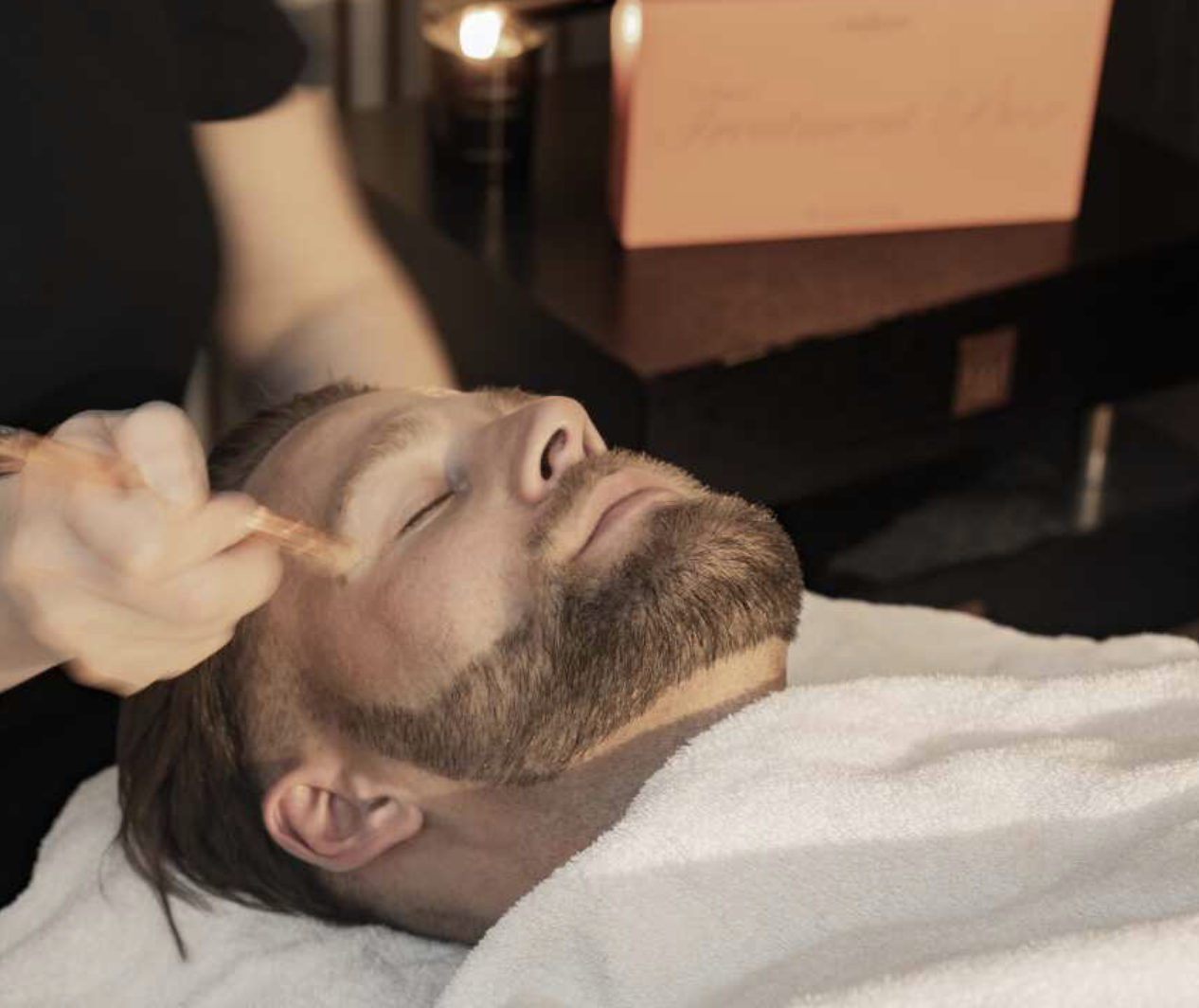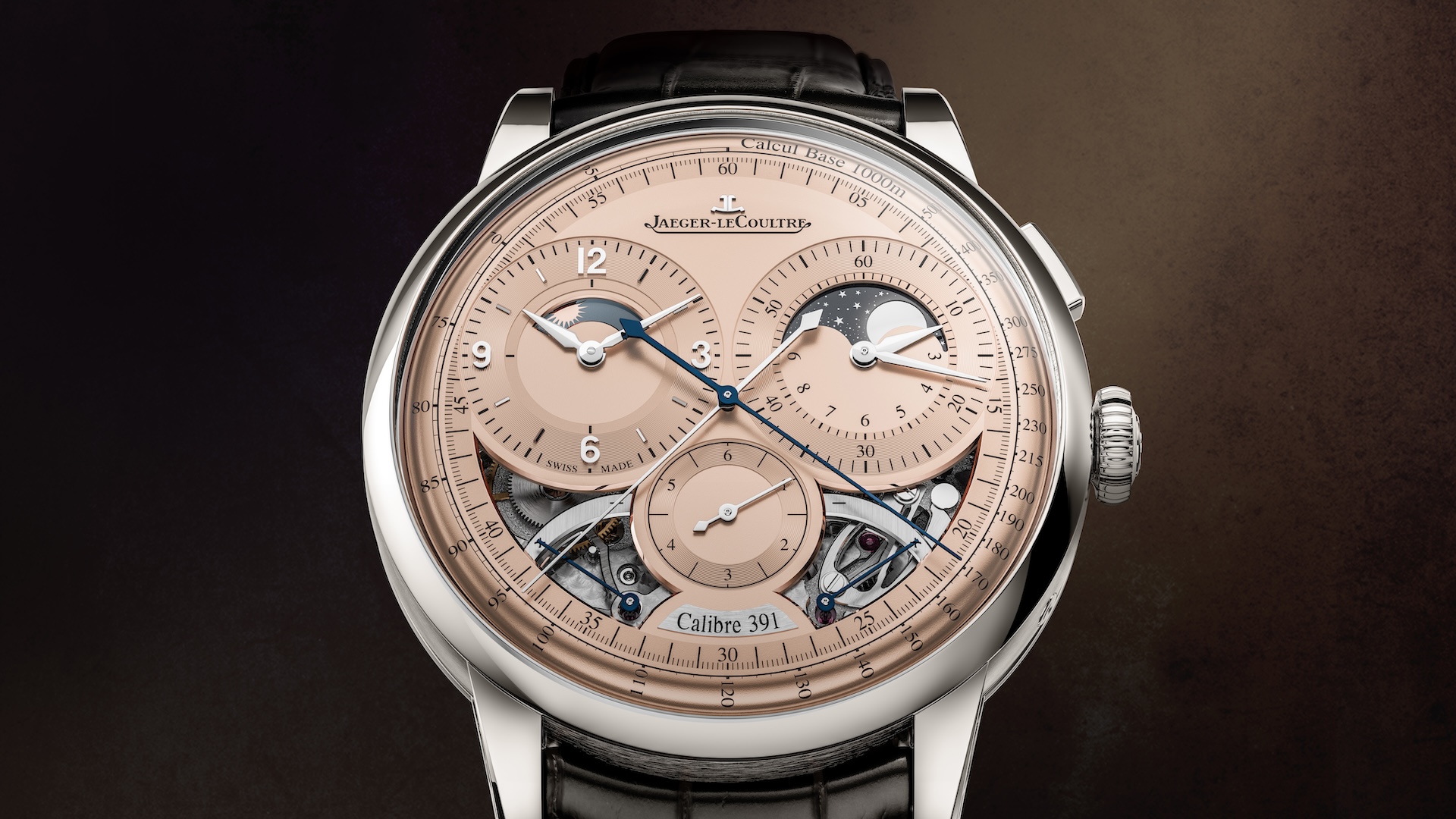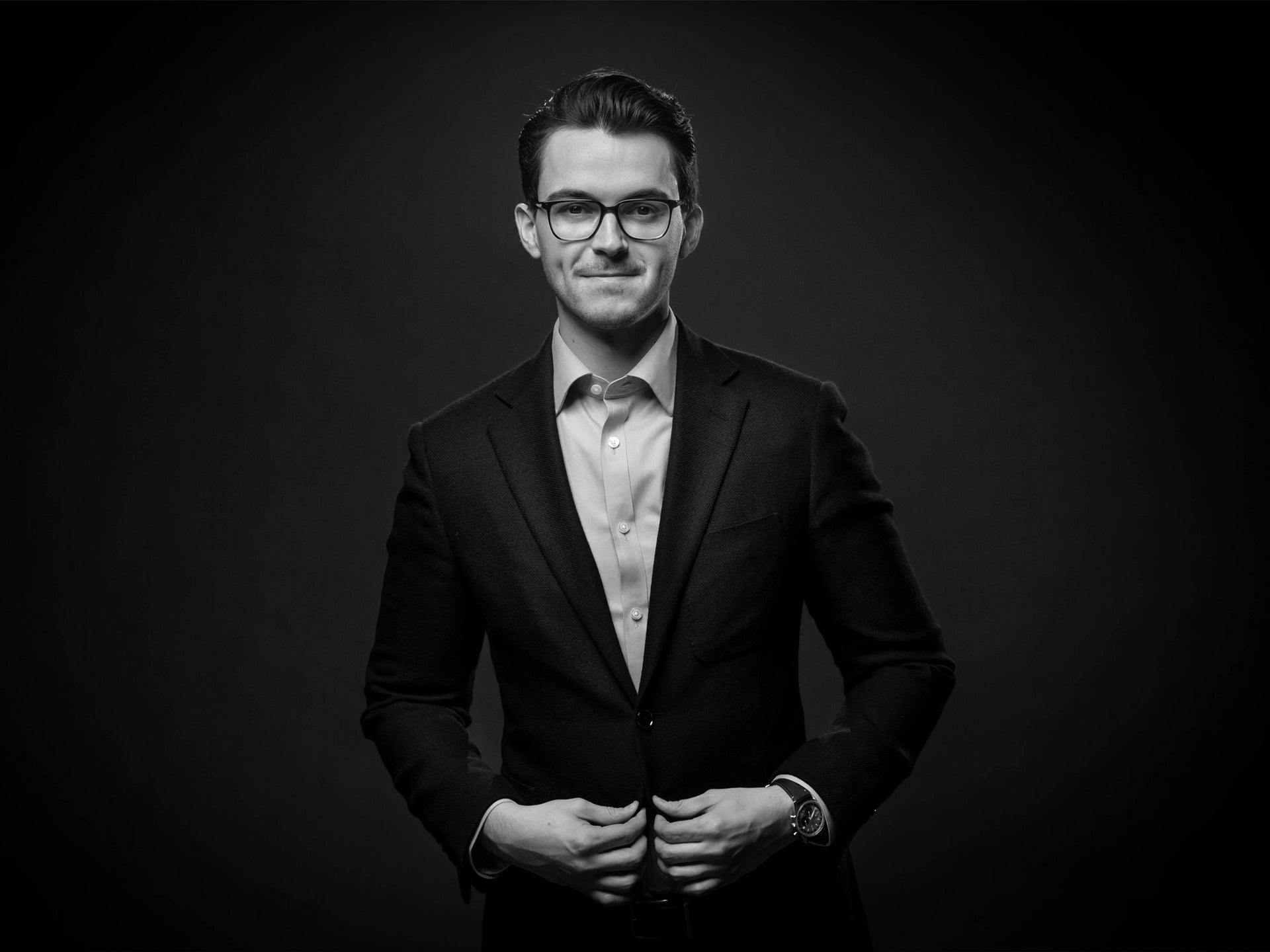
Ode to Oasi
Ermenegildo Zegna wrote the book on dapper Italian style. Now, a new coffee-table tome pays homage to its greatest creation—one that, hopefully, will endure long after the brand is gone.
Related articles
Strolling through a storybook forest like Oasi Zegna in Northern Italy, one could easily (and, perhaps, understandably) find heightened concepts like fashion and design slipping out of mind entirely.
Yet it’s here, in the spiritual home of an entity that has come to embody both Italian elegance and high-powered corporate tailoring, where fashion’s potential for regenerative change is at its most striking. Born in Oasi Zegna, a new tome from the Zegna house and published by Rizzoli, brings this relationship to life in vivid colour—a tribute both to the sweeping nature reserve that stands as the brand’s greatest creation and the philanthropic streak that remains core to its identity.
While Zegna’s modern-day nerve centre lies in Milan, its soul rests in Trivero. A secluded comune nestled in Northern Italy’s wool-producing Biellese Alps, it was here Ermenegildo Zegna and his brothers started making quality fabrics using a mill handed down to them by their father over a century ago. Ermenegildo’s vision grew in line with his house’s reputation, and as the Roaring Twenties gave way to the austere ’30s, he recognised something commonplace today, but then revolutionary—the potential of fashion as a force for social and environmental good.
By then one of the area’s biggest employers and its most significant social force, Zegna funded social welfare projects and employed locals to start work reforesting 100 km² of hillsides and valleys surrounding the brand’s ancestral home. Transforming a landscape rendered barren and lifeless by a century of industrial revolution, the half-million trees planted would bloom in the decades that followed to form Oasi Zegna, a pristine pocket of wilderness 30 times larger than New York’s Central Park. It’s both the brand’s greatest creation and, increasingly, its greatest source of creative inspiration.

Even as Zegna’s suits have become a common sight in offices of state and on Hollywood’s most glamorous red carpets, Oasi Zegna serves as a living, breathing symbol of democratisation within the world of high fashion. To this day, it remains freely accessible to the public—a popular escape for action sports enthusiasts and bird watchers alike—and is the brand’s main philanthropic HQ, home to the house’s charitable foundation, a host of contemporary art installations and myriad biodiversity projects.

At once an ode to Zegna’s altruistic heritage and a visual mission statement for its future, Born in Oasi is not your typical coffee-table fashion book. There are no monochrome shots of glamorous supermodels in razor-sharp tailoring. Rather, suits and shoes give way to Oasi Zegna’s lush forests captured at the height of summer and in the brightest hues of autumn, both in its modern-day resplendence and during its early years. Archival photos and artworks are interwoven with contemporary illustrations by Paolo Bacilieri, Cecilia Carlstedt and Giuseppe Ragazzini, offering a conceptual look at the brand’s metamorphosis from a successful mountainside clothmaker into a tailoring icon—a story eloquently told in text by journalist Chidozie Obasi.
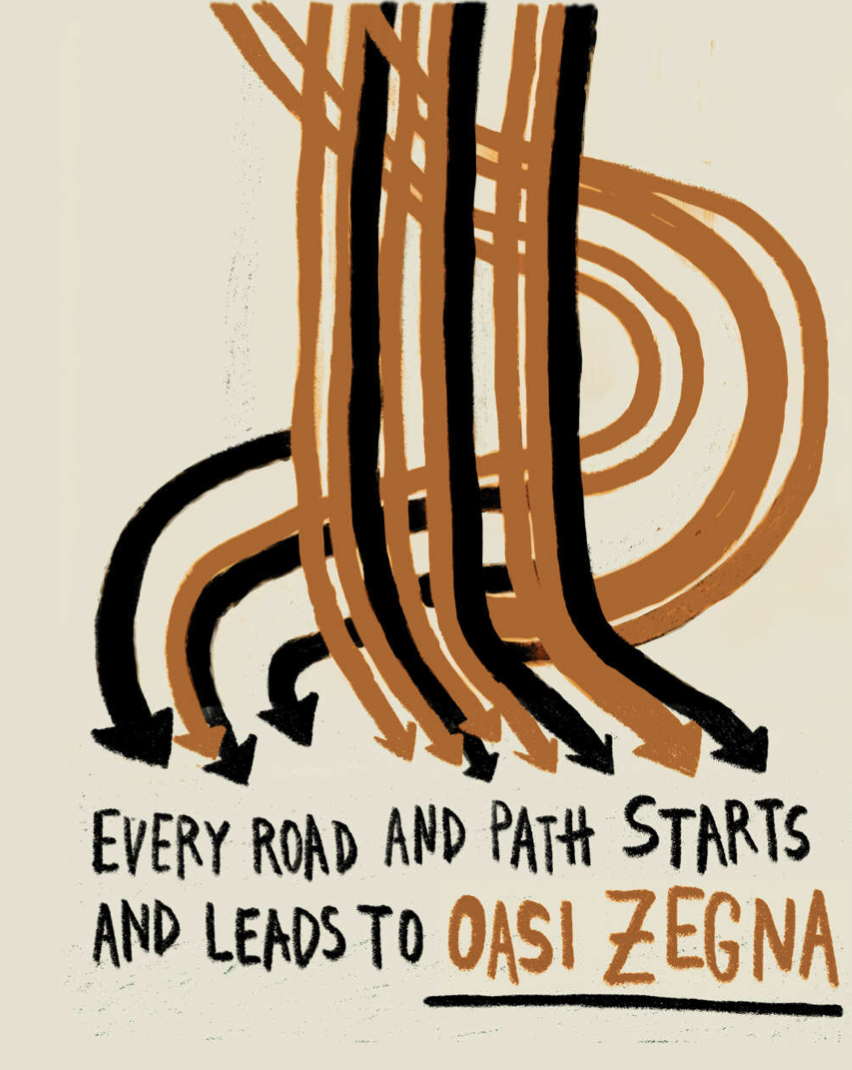
Emerging from the hyper-capitalist aesthetic that dominated throughout the turn of the millennium, in recent times Zegna has joined its contemporaries in re-evaluating its relationship with nature. Oasi Zegna is naturally the focal point of such ruminations. A strip of 232 Panoramica Zegna, the serpentine road Zegna built to improve public access to Oasi and its sweeping vistas, now features on the company’s logo.

This influence is already filtering down into the label’s sartorital output. Artistic director Alessandro Sartori, who rejoined the brand in 2016, has made a pronounced shift away from the sporty casualwear and overtly slick suiting of Zegna’s recent past, allowing the natural textures of wool, linen and cashmere to guide it back to a more time-honoured aesthetic. But regardless of what lies ahead creatively, Oasi Zegna, and the book it inspired, will serve as an essential reminder of what can be achieved when the industry’s biggest players embrace conservation over consumption.
“It’s a legacy that [Ermenegildo] left us for future generations,” says Zegna’s great-grandson, now the company’s chief marketing, digital and sustainability officer, Edoardo. “His vision went beyond reason, and as a generation, we are just its custodians.”
Born in Oasi Zegna is now available to buy exclusively at Zegna stores globally and online; zegna.com
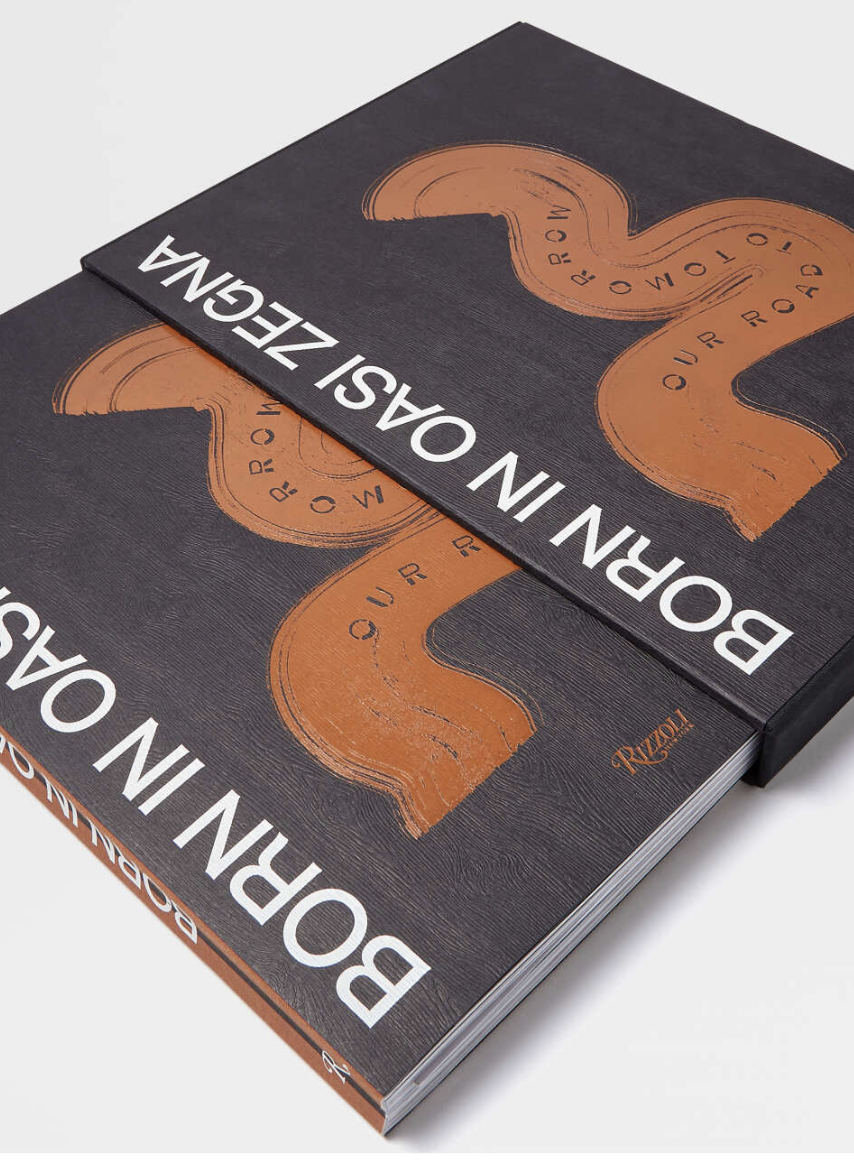
Subscribe to the Newsletter
Recommended for you
Face Time: L.Raphael in Geneva
No trip to the Peace Capital is complete without a stop at L. Raphael, the world’s leading clinic—especially, these days, for men.
June 25, 2024
Everybody Loves Naomi
Fashion fans adore her. And so do we. Lucky, then, that a new exhibition is paying homage to the undisputed queen of the catwalk.
By Joseph Tenni
June 22, 2024
You may also like.
You may also like.
Watches & Wonders 2024 Showcase: Jaeger-LeCoultre
New offerings from the estimable Swiss masters of complications.
If you were wondering whether Jaeger-LeCoultre could top its 2023 Reverso novelties—yes, we’re still dreaming about the Reverso Tribute Chronograph—you’d be wrong to doubt the 190-year-old watchmaker from the Vallée de Joux.
Okay, so we didn’t see any collector favourites in Reverso or Polaris models, but the brand did put on quite a show with four new reveals—the Duometre Heliotourbillon Perpetual, Duometre Quantieme Lunaire, Master Ultra Thin Perpetual Calendar, and Duometre Chronograph Moon—highlighting its more intricate, high horology skills as it sets out its stall for 2024.
The latter was one of the standouts of the fair. Unveiled in 2007 as a chronograph, the new piece has been reimagined as a celestial complication. Available in platinum, and pink gold, the new Duometre iterations come with an entirely new calibre, dial and case, and is an elegant expression of the company’s watchmaking ethos.
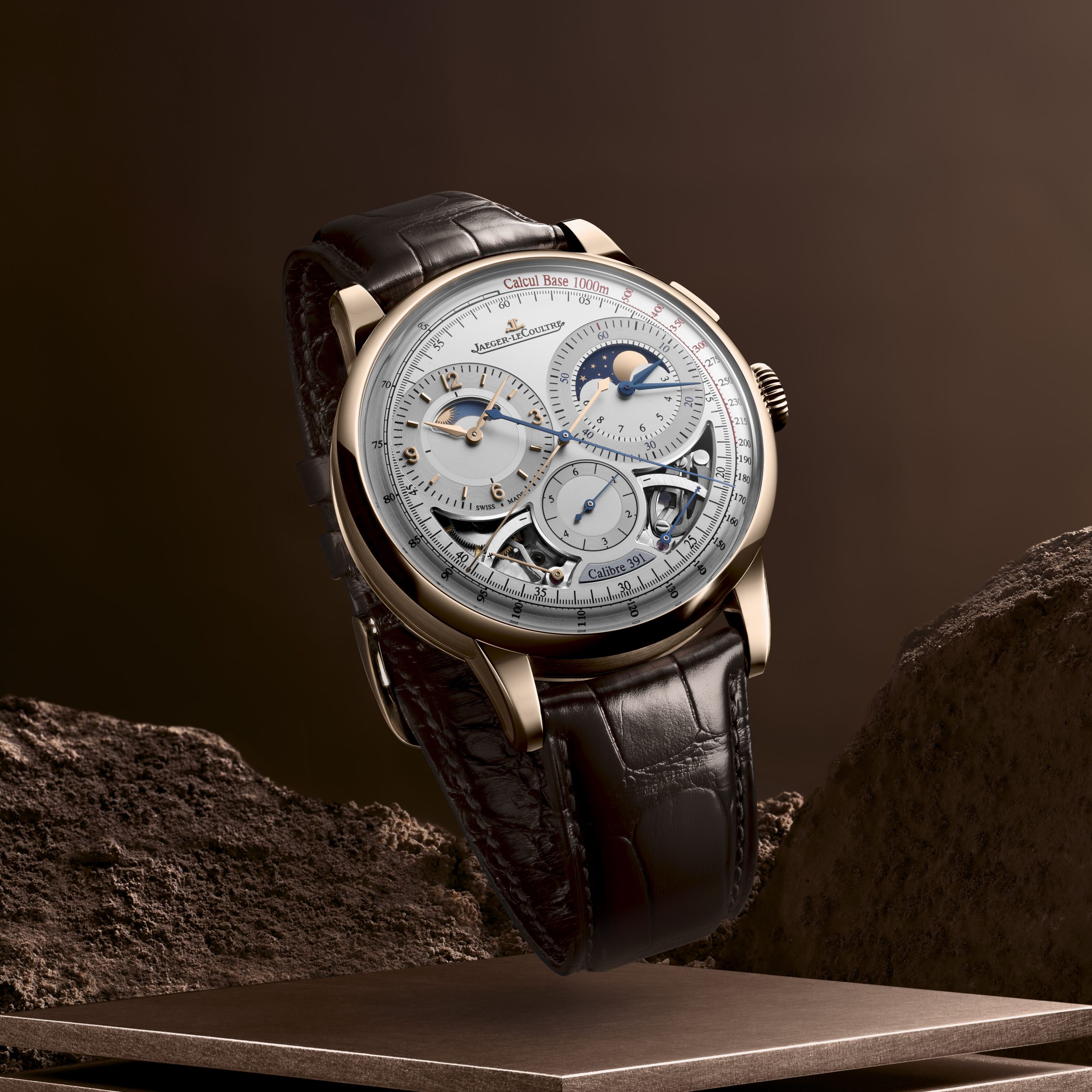
The Calibre 391 introduces a fully integrated in-house movement that utilises a manually wound mono-pusher chronograph, a moonphase and night-day complications, as well as two power reserve indicators and a seconde foudroyante (flying seconds) display. Activate the mono-pusher and the hand runs to a remarkably precise one sixth of a second.
The new Master Ultra Thin Perpetual Calendar, on the other hand, will appease traditionalists with a refreshing update to its case and dial design. We get a new pink gold model with a midnight-blue sunray dial—as well as a significant increase in power reserve; 70 hours, to be exact.
—
Read more about this year’s Watches & Wonders exhibition at robbreport.com.au
You may also like.
Watch This Space: Teddy Baldassarre
Meet the game-changing horological influencers blazing a trail across social media—and doing things their own way.
Only a few years ago, Teddy Baldassarre was working for a software start-up in his hometown of Cleveland, Ohio—a far cry from the luxury watch universe. Today, with more than a million YouTube subscribers, 376,000 Instagram followers and 90,000 TikTok fans, Baldassarre is one of the largest video content creators in the sector.
“I was like many who fall into the subject matter, being led headfirst by passion,” says Baldassarre. “I was fascinated with the depth of the subject, from the history, engineering, design, and navigating the many brands that made up the industry. After graduating, I finally had some money to spend and amassed a collection of pieces. I became obsessed with hearing from other collectors and how each watch they acquired connected to their broader story.”
Electing not to tell a single soul about his newfound bounty of vintage timepieces, he posted his first YouTube video in 2017. Within a month, the clip had accumulated more than 30,000 views.
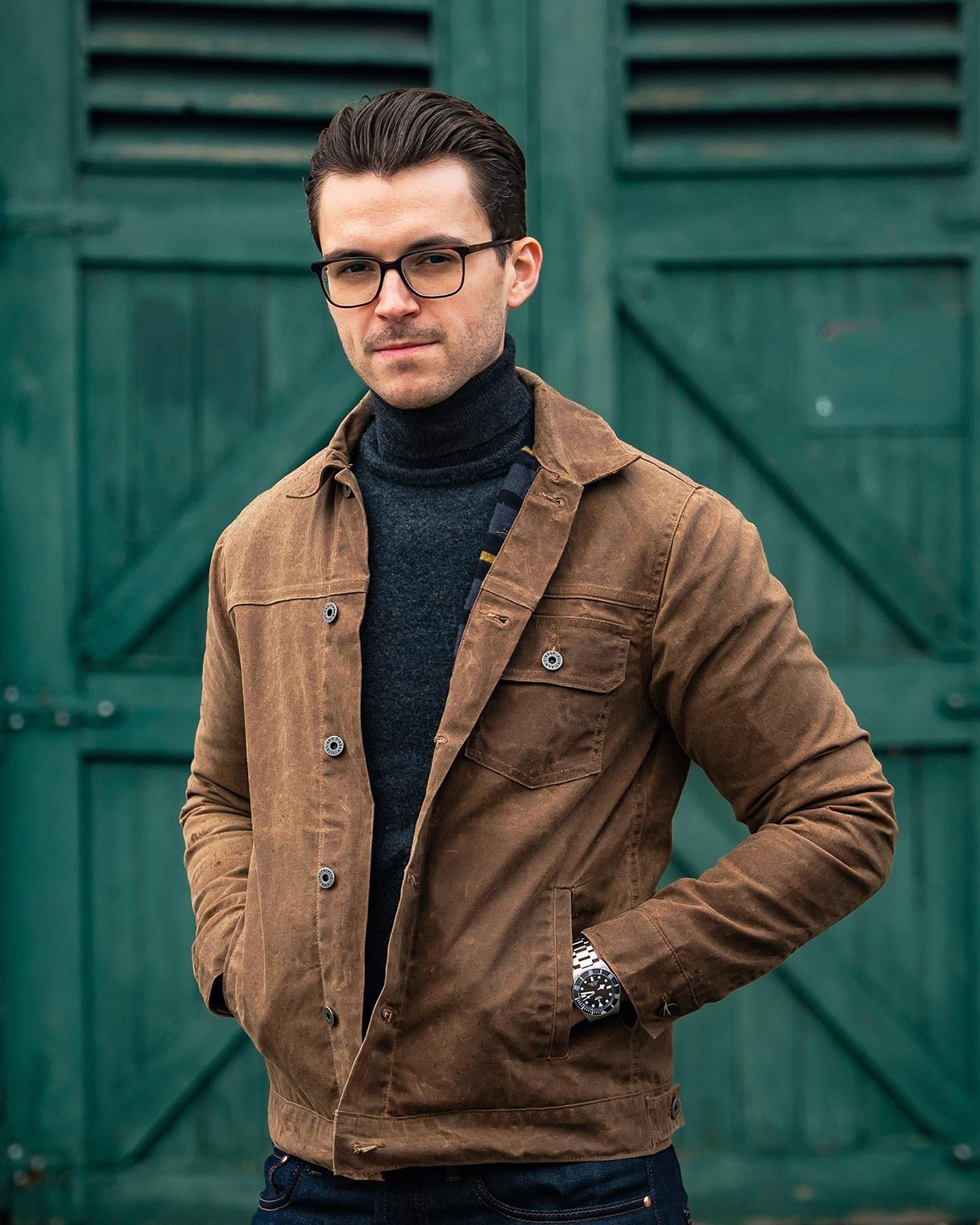
What gives Baldassarre’s content mass appeal is his delivery, depth of knowledge and evidential passion for these knickknacks that tick. And he has leveraged his engaged, digitally savvy audience to create his own watch ecosystem: a website that highlights the latest tidings in the watch world, as well as an authorised e-commerce site, launched in 2020, stocking a small subset of brands like Nomos Glashütte and Raymond Weil.
“We have scaled year-on-year, adding new brands, which now umber over 35, and launched our bricks-and-mortar store (in Cleveland] in February this year,” he says. “My goal is to produce the best watch content for watch enthusiasts all around the globe, to be the leading retailer for my generation, and to continue to do this for as long as I can.”
View this post on Instagram
—
Read more about the watch industry’s horological influencers at robbreport.com.au
You may also like.
Watch This Space: Brynn Wallner
In the first installment of our showcase of new progressive watch pundits, we profile the influential founder of Dimepiece.
It’s impossible to miss Brynn Wallner’s take on watches. Under the pseudonym of Dimepiece, the 33-year-old is playing a considerable part in steering the conversation around women in watches.
The “teeny tiny” movement—a phrase she coined—is currently buoyant, with watches of smaller shapes and sizes dominating the visual landscapes of social media.
“The post-pandemic spike in watch popularity has resulted in new ways of regarding watches,” says Wallner, from her apartment in New York City. “As more people get into this world, more interesting things inevitably happen, as we’ve seen with the rise in popularity of vintage Cartier, thanks to collectors like Tyler, the Creator.”
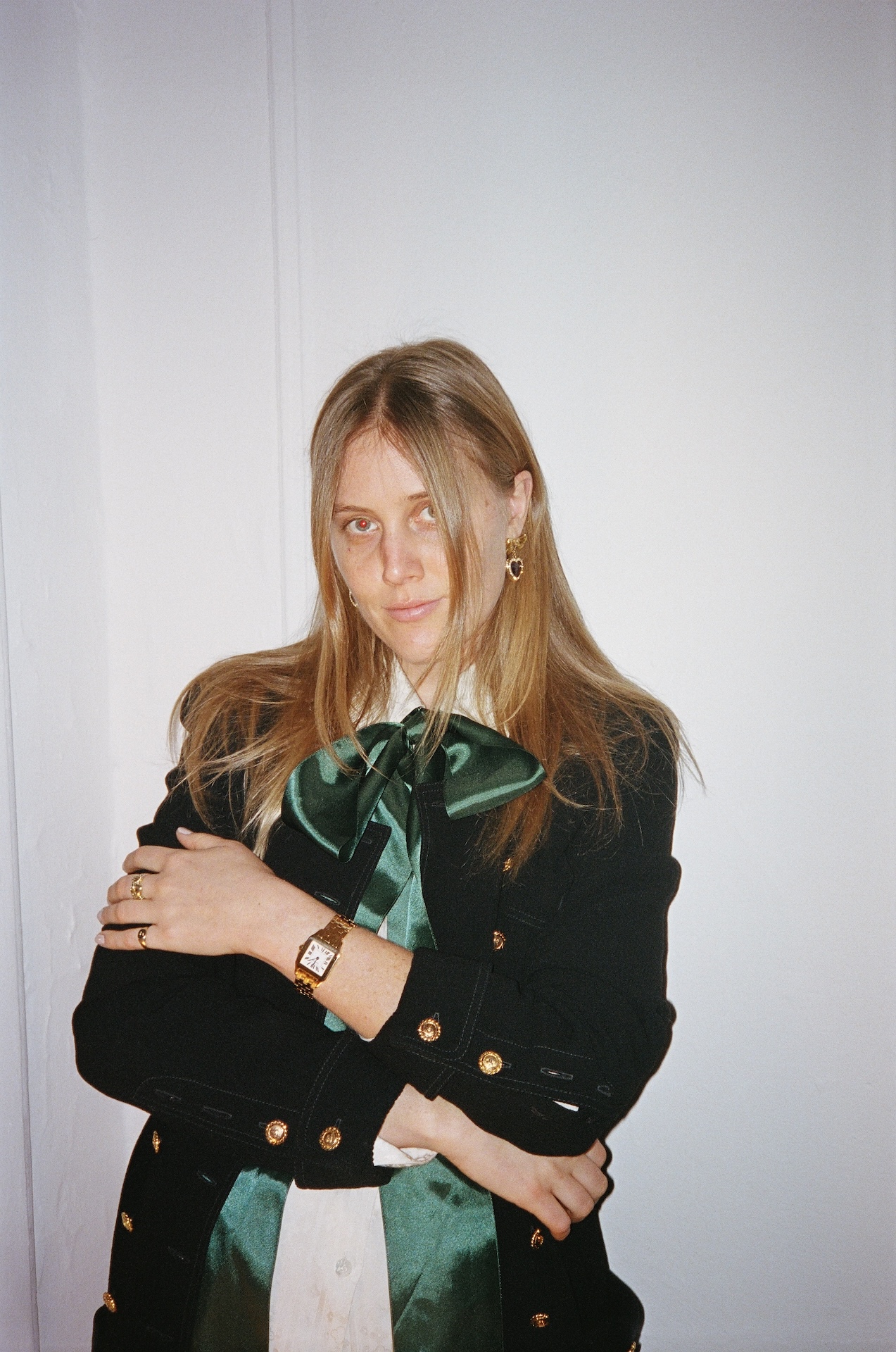
With social media now playing an integral part in watch reportage, from breaking news to the unveiling of brand novelties, Wallner contributes to the zeitgeist with a refreshing take on watches which is devoid of snobbery.
On any given day, she might, say, feature a post of the Olsen Twins parading New York’s Upper East Side wearing vintage Audemars Piguet Royal Oaks, or Timothée Chalamet rocking a “teeny tiny” Panthère de Cartier.
“I speak about them [watches] in the way that I would naturally, not bothering to alter my voice or perspective based upon a traditional idea of what a watch enthusiast’ should look or sound like.” says Wallner.

Since 2020, she has utilised her website platform for the greater good, interviewing women in non-pretentious settings about their collections. (Photos in a recent story on New York Times reporter Anna Kodé juxtaposed her Swatch Random Ghost with a greasy-looking plate of hot chips and a mound of ketchup.)
“A year into starting Dimepiece, I didn’t even own a watch, which only fuelled my perspective—how is it possible that, at age 30, I didn’t own or even aspire to own a luxury watch?” she remarks. “I felt that the industry completely missed me—young-ish, female, interested in fashion and ready to spend my disposable income.”
Today, Wallner is reaping the fruits of her labour: she travels the world under the guise of “press trips”; she curates and sells vintage watches together with friend Alan Bedwell of curio site Foundwell; she’s privy to new and exclusive releases before the public; and she’s penned features for publications such as the Financial Times, GQ and Harper’s Bazaar.
“Millennials and Gen Zs, the digital natives, are so burnt out by their screens that they’re starting to appreciate analogue things, like records and film cameras,” says Wallner. “The same goes for watches, and as the secondary market gets bigger, it will become even more of a destination for younger consumers already acclimatised to shopping pre-owned.”
Read more about the watch industry’s horological influencers at robbreport.com.au
You may also like.
Watches & Wonders 2024 Showcase: Rolex
At the marquee horological presentation of the year, a lot of the hysteria was reserved for Rolex.
With Watches & Wonders 2024 well and truly behind us, its importance on the industry—and the trends that follow—is obvious. For the uninitiated, the week-long affair is the marquee horological presentation of the year. It’s where the world’s top brands convene to reveal their latest novelties and updates to revered models.
You’ve likely caught glimpses of the extravagant event across social media; the world’s biggest brands shelling out millions of dollars to highlight its newest novelties for 2024. But if you can move past the ritziness and watch snobbery that ensued, there’s much to be said about the releases from this year’s event. In this instalment, we lead off with the ne plus ultra of luxury watchmaking, Rolex.
—
ROLEX
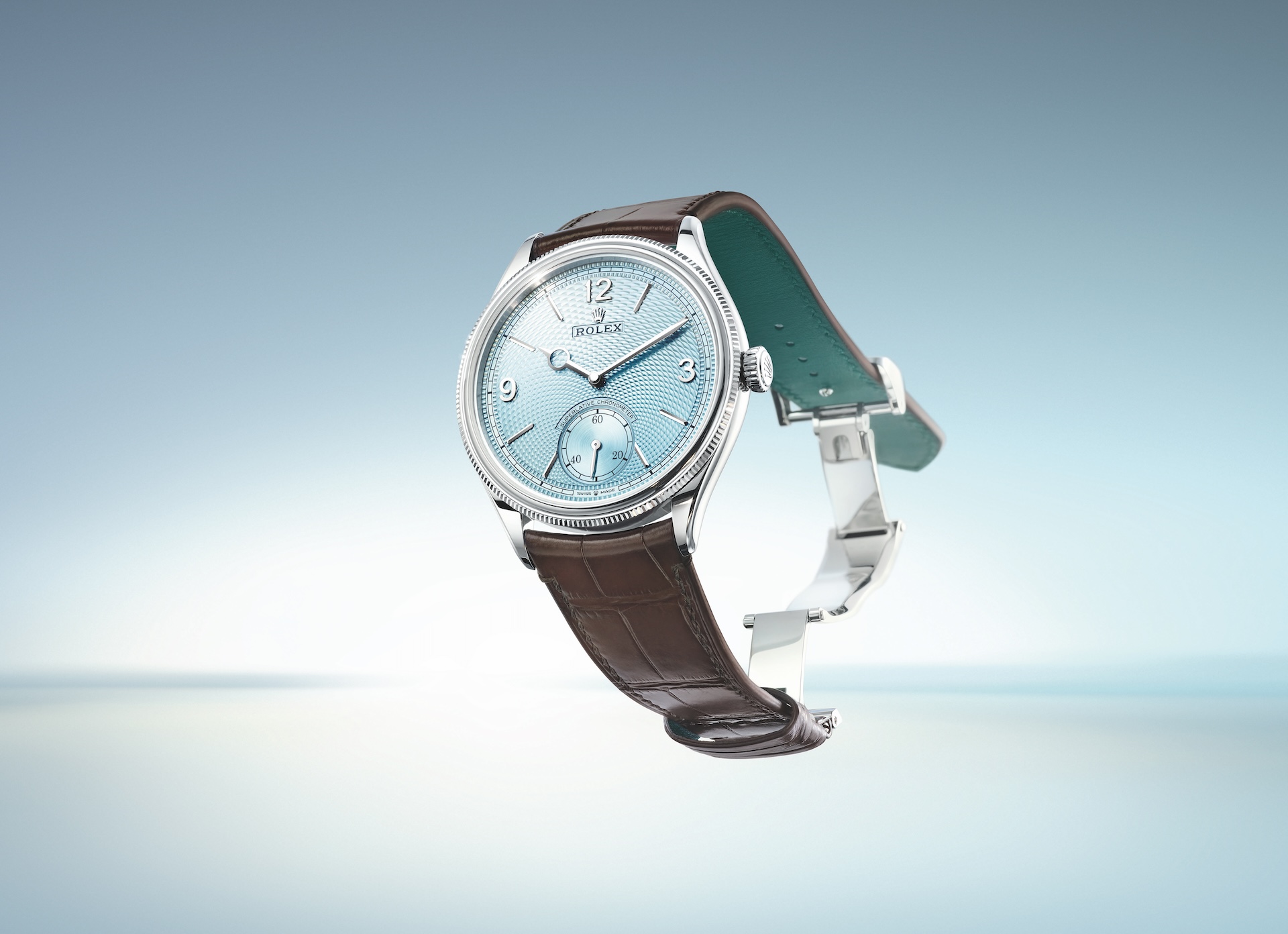
By now, we know that Rolex doesn’t succumb to fanfare; instead, it makes watches on its own terms, unveiling novelties in dribs and drabs. The stance continues this year as the luxury Swiss watchmaker adds a new spin to time-honoured models. There’s nothing revolutionary at play with 2024’s creative specialities—not enough to warrant the hysteria that ensued in Geneva—but we didn’t just receive cosmetic updates, either.
We got to welcome a new GMT-Master II to the luxury arena (pictured below). Now in its 70th year of production, the revered traveller’s companion receives a stealthy new appearance thanks to its grey-and-black ceramic bezel; subsequently earning the aptly furtive moniker, the “Bruce Wayne”. The non-limited piece comes with the elegant Jubilee bracelet or rugged Oyster bracelet, and harks back to the 2007 GMT-Master release with its green accents and subdued appearance. Sure, this GMT unveiling might not have been the reference collectors were clamouring for—will we ever see the return of the red-and-black “Coke” bezel?—but the new GMT-Master II certainly adds glitz to the collection.
Elsewhere, the Oyster Perpetual 1908 (picture top), now in its second year of production, was unveiled in 950 platinum with a new Ice Blue guilloché dial, much to the satisfaction of dress watch enthusiasts. This stunning iteration of the 1908 builds on the success of last year’s release, this time via a centrepiece guilloché dial and guilloché rice-grain motif with a distinctive three-dimensional, geometric pattern. Finished on a brown alligator leather strap, the 1908 is one of the slickest dress watches of the year, and adds needed flair to the played-out, industry-wide blue-dial theme.
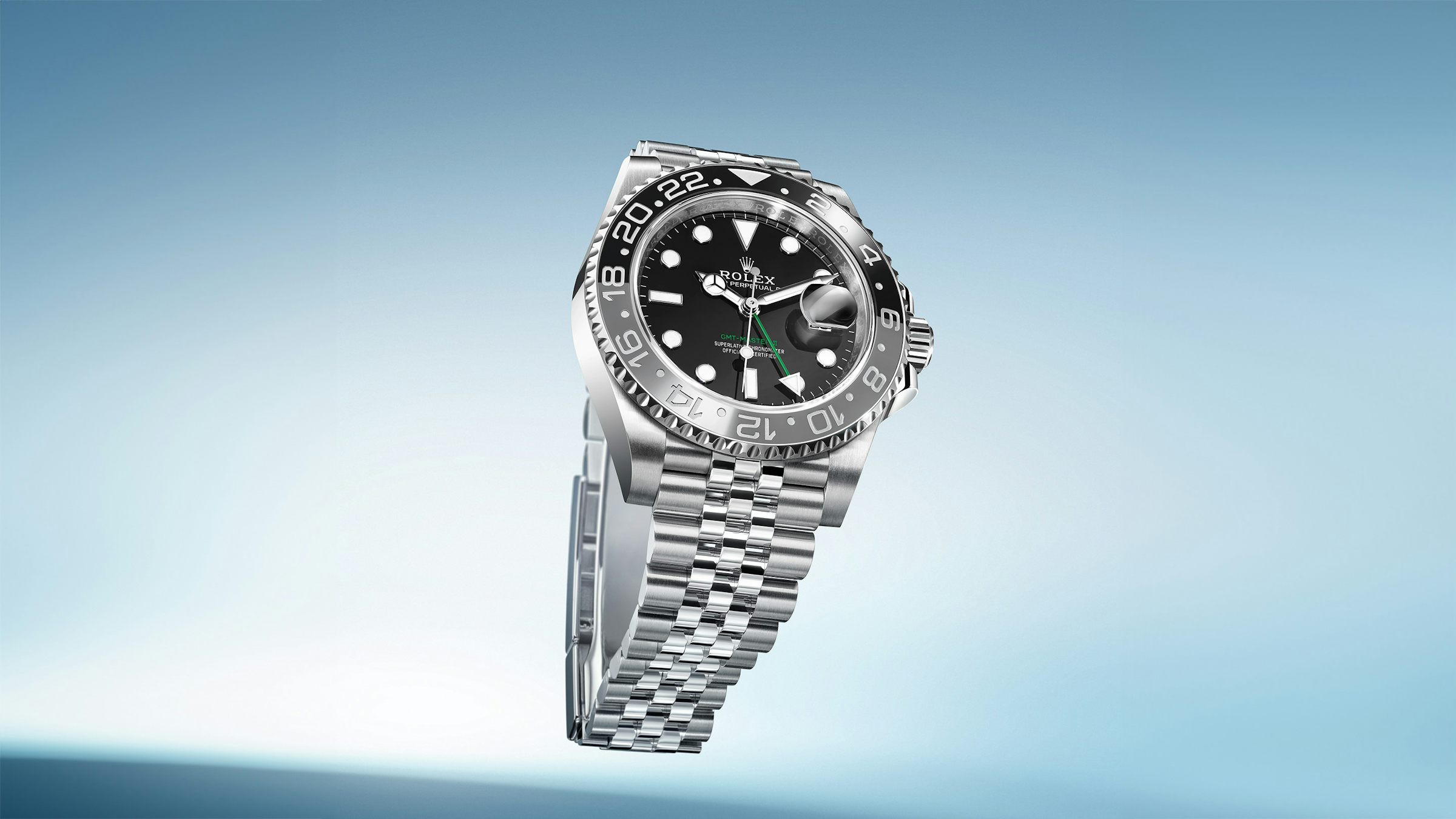
For those who prefer to brave the depths of the ocean with around $86,800 strapped to the wrist, the new Rolex Deepsea is bound to generate interest, however niche. Not for the faint-hearted, this divers’ watch is presented in 18-karat yellow gold, adding considerable heft and razzle-dazzle to an otherwise tool-specific timepiece.
For extra flash and dash, the Deepsea comes with a stunning 60-minute graduated Cerachrom bezel insert in blue ceramic, as well as a blue lacquer dial.
Perhaps the biggest news from Rolex this year is the discontinuation of the 2023 Rolex Le Mans Daytona. Marking what could be the shortest production run of any Rolex ever—and arguably the company’s best offering in years— the 18-karat white gold Daytona was swiftly replaced with a new off-catalogue, special-order-only Le Mans edition, now in 18-karat yellow gold, which rivals the best of the Paul Newman-era Daytonas. It remains to be seen whether more information will be revealed about this handsome newcomer, or if it will have the same impact as its predecessor.
—
Read more about this year’s Watches & Wonders exhibition at robbreport.com.au
You may also like.
Face Time: L.Raphael in Geneva
No trip to the Peace Capital is complete without a stop at L. Raphael, the world’s leading clinic—especially, these days, for men.
The buildings on the banks of Lake Geneva are topped with signage for the world’s most exalted brands. At night, the lighted logos of Hermès, Patek Philippe, Chopard et al. serve as beacons for the one percent. It’s no accident that financial powerhouses like UBS also form part of the skyline. This is where real money resides. On the left bank, nestled between Société Générale and Boucheron, is the orange-coloured sign for L.Raphael—a name that, to skincare devotees, is as lofty as its neighbours on this illustrious strip.
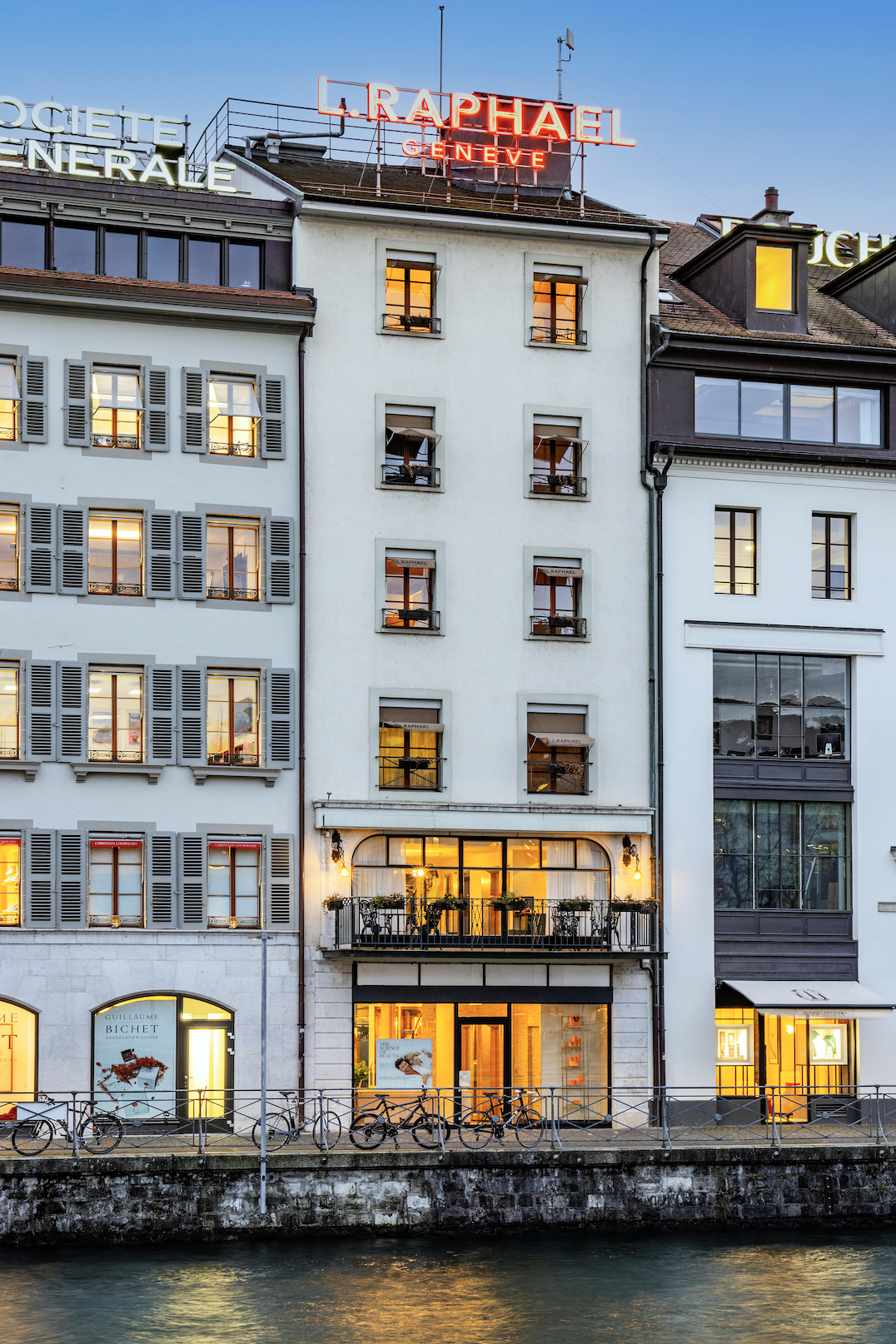
For over 20 years, owner Ronit Raphael, a perfumed steamroller of a woman who divides her time between Geneva, New York and the world’s chicest parties, has tended to the faces, bodies and vanities of the rich and famous. Her six-storey salon on Geneva’s swank Rue du Rhône offers a multi-dimensional, personalised approach to beauty and wellness for those as serious about skincare and anti-ageing as most Swiss are about chocolates and watches.
“Switzerland is also about advanced pharma, healthcare and new technologies,” Israel-born Ronit avers, on an early-spring afternoon. “They’re very uncompromising when it comes to quality. They expect results.”
It’s not just the Swiss who are treading a path to her handsomely appointed clinic. Ronit’s exacting clientele includes VIPs and C-suite types from around the world. It’s not uncommon, she confides, for a time-poor billionaire to fly in for a few days and block a group of therapists to work on him, six hands at once. Or for her team to be dispatched to someone’s yacht when a trip to Geneva is not an option. “They are ready to pay for this service as they know the result.”
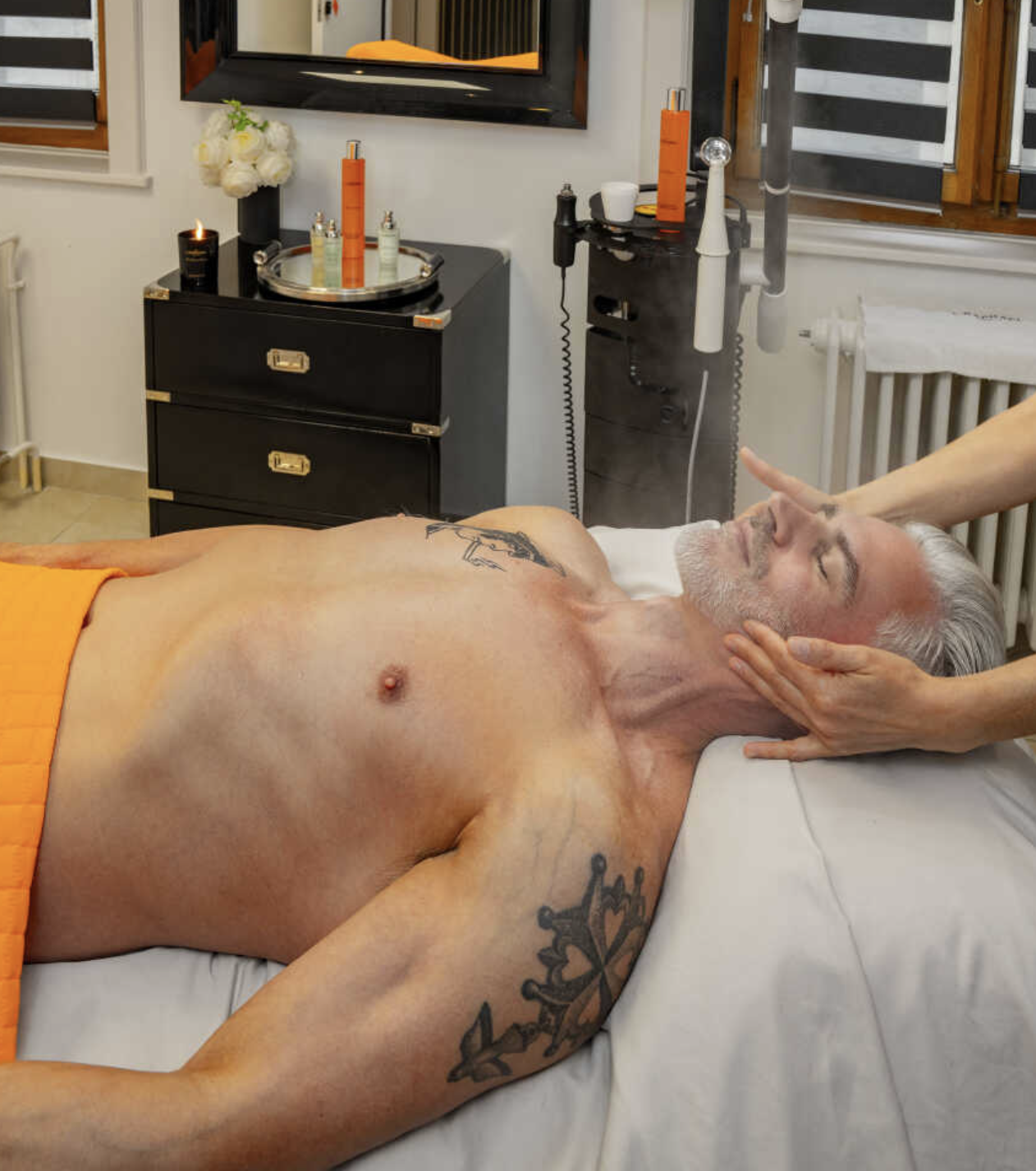
L.Raphael is not strictly for the ultra-rich, though. Ronit points to a recent uptick in serious skincare among those who breathe less rarefied air. “It started with women,” she explains, “but more men are investing considerable amounts of their disposable income in their appearance. We are facing a societal change as people evaluate which luxuries come first. Designer luxuries are losing ground to healthy beauty and youthful energy.”
Originally making up only 15-20 percent of her clientele, more and more men have discovered L.Raphael through their wives, partners or press. It’s not surprising, given that they are working later in life and are afraid of being aged out. Since the rise of the young tech CEO a few years back, the prevailing sentiment is that if you haven’t made it by 28 you are obsolete.
“The market has changed so much,” Ronit muses. “Especially with the demands on appearance of social media, men are under a lot of pressure to remain vital and look good. They are seeking solutions.”
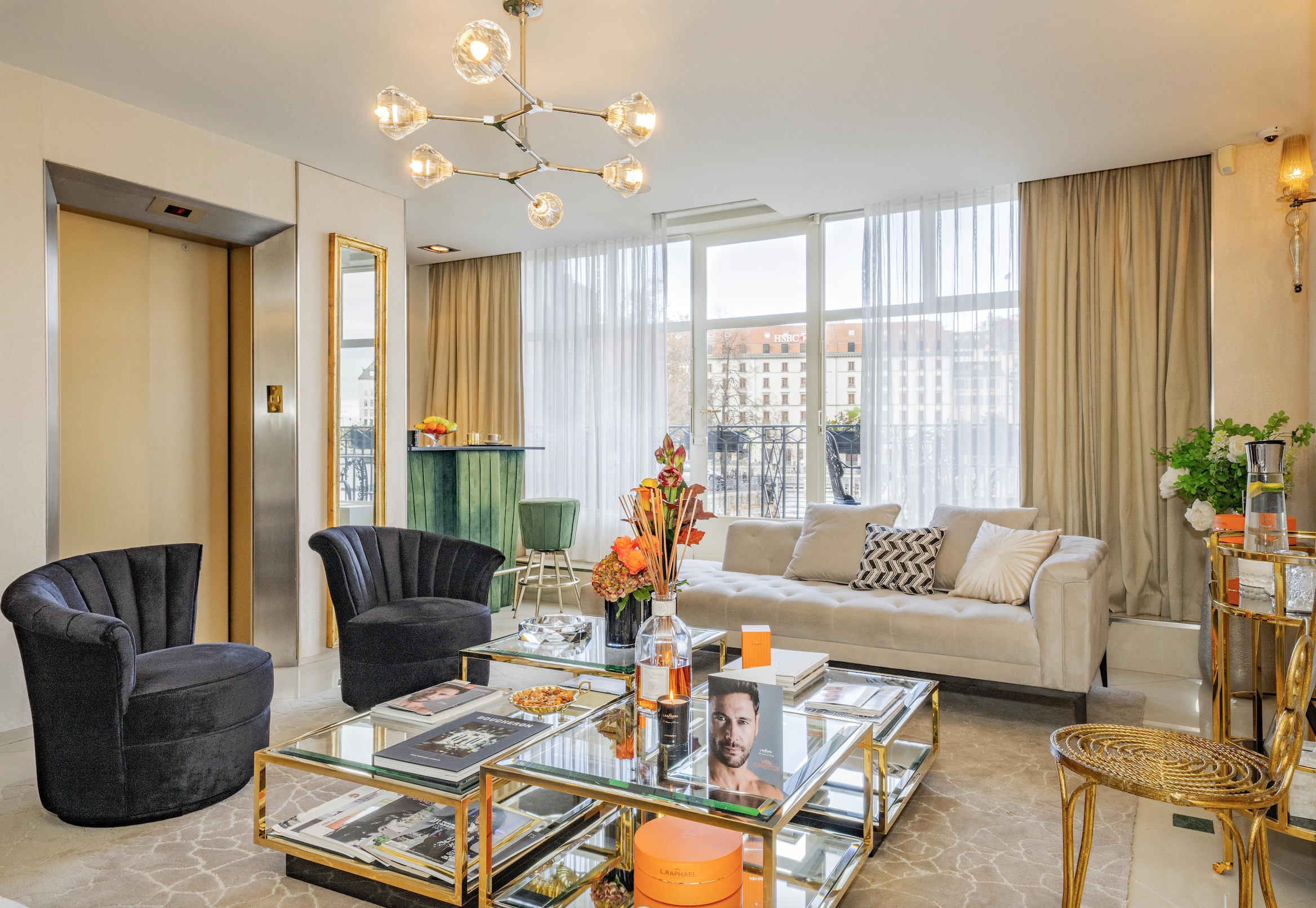
A few years ago, the company launched a separate men’s section on the top floor of the building. There, men have their own waiting room and can relax in a lounge between private consultations and treatments. For those unable to attend in person, the L.Raphael website delivers its signature products internationally, including to Australia.
The company’s green-caviar-infused products and oxygen-based treatments are the stuff of beauty legend. But it has promoted holistic offerings from the outset, blending age and stress management, nutrition, physical activity, and her cutting-edge proprietary lotions and potions.
“I literally go the extra mile to ensure that my clients incorporate a healthy lifestyle into their regimen,” Ronit says, explaining how one of her off-menu extras is going on lengthy walks with regulars who need gentle coaxing. It sounds cliched, she adds, but “true beauty radiates from the inside out, when the body and mind are in perfect harmony.”
Their backgrounds may be diverse, but most of her male clientele are results- focused and prefer treatments—to borrow from Monty Python—with machines that go beep. “It makes the experience more ‘masculine’ if there is machinery involved,” says Ronit. These men gravitate towards hair loss, acne treatments and, increasingly, lifting and sculpturing for the face and body.
“At L.Raphael we stand for mostly non- invasive treatments,” Ronit says, of options such as the Combi-Treatment, a triple-action procedure in which a therapist treats the skin with a targeted jet-pressure spray application of oxygen enriched with lecithin, omega-3, antioxidants and vitamins, “but we also have a doctor on hand for more involved treatments and procedures.”
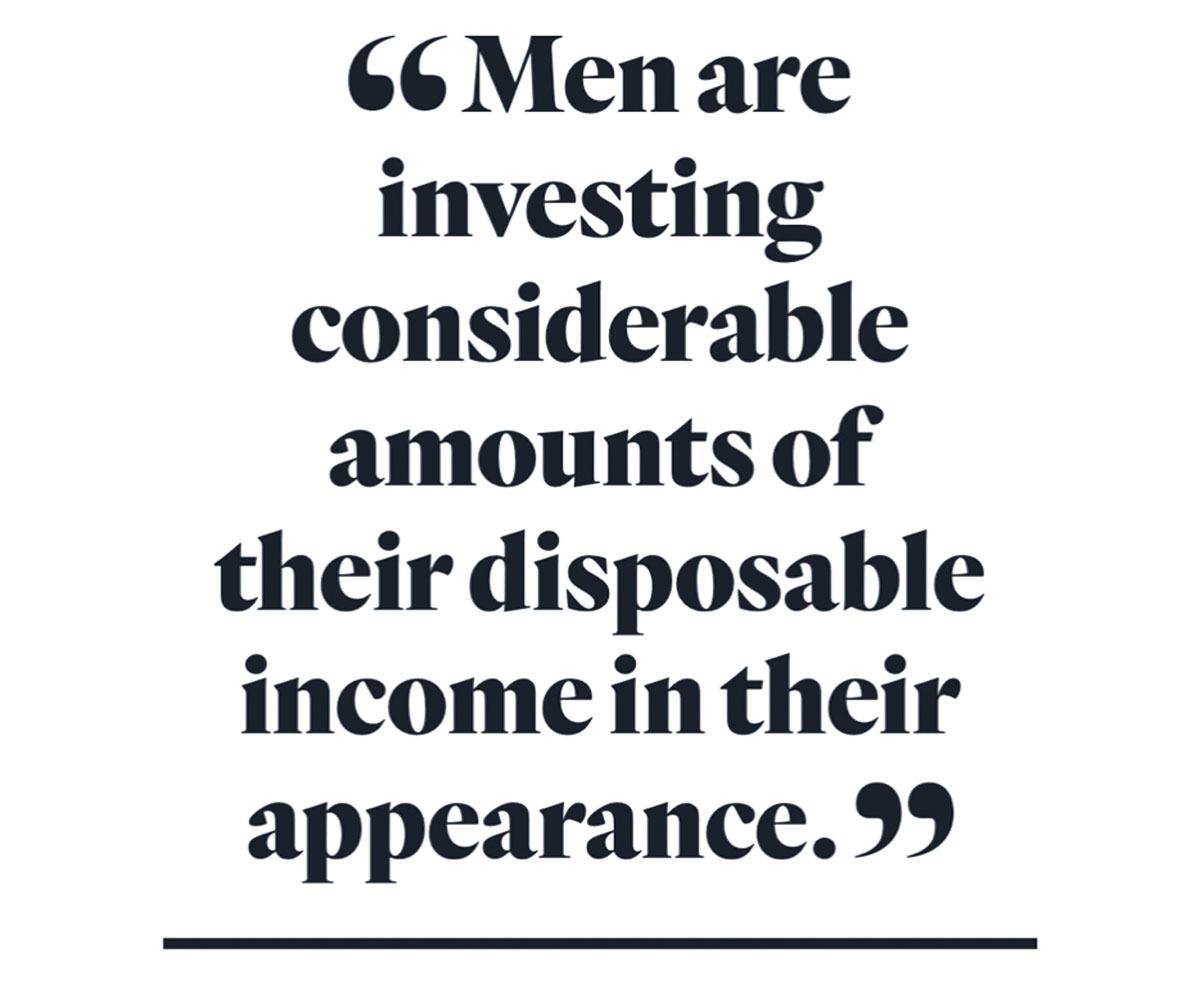
The resident medic, Dr. Gumener, administers everything from Botox (the popular muscle-relaxing neurotoxin that was originally developed to treat eye problems but is now injected directly into muscle to help with worrisome expression lines like “puppet mouth” and “the 11s” that form between the eyebrows), to threading (a minimally invasive alternative to facelift surgery performed by inserting a medical- grade thread material into your face and then “pulling” your skin up by tightening the strand) and mesotherapy (a technique that uses injections of pharmaceuticals, vitamins and plant extracts to rejuvenate and tighten skin, as well as remove excess fat).
A common denominator among men is their preference for face treatments with zero downtime so that they can return to the office afterwards. “They don’t have the luxury of covering anything with makeup,” Ronit explains, “so they want no visible side effects.”

Beyond Botox and fillers such as Juvéderm and Restylane, which are used on wrinkles and folds, as well as to plump cheeks and lips, and to build up sagging jawlines, men are drawn towards newfangled offerings such as Ultherapy. A tightening procedure, also known as “the lunchtime lift”, Ultherapy uses ultrasound to work
on the neck, under the chin and or eyebrow areas over the course of two to three months. Results can take up to a year to fully kick in, but within weeks most men see visible tightening and a healthier, collagen-rich complexion.
Frown lines, sagging necks and spare tyres aside, are there any key differences between the sexes? “In my experience,” Ronit says, choosing her words carefully, “while we don’t offer excruciating treatments, women are much better with pain.”






